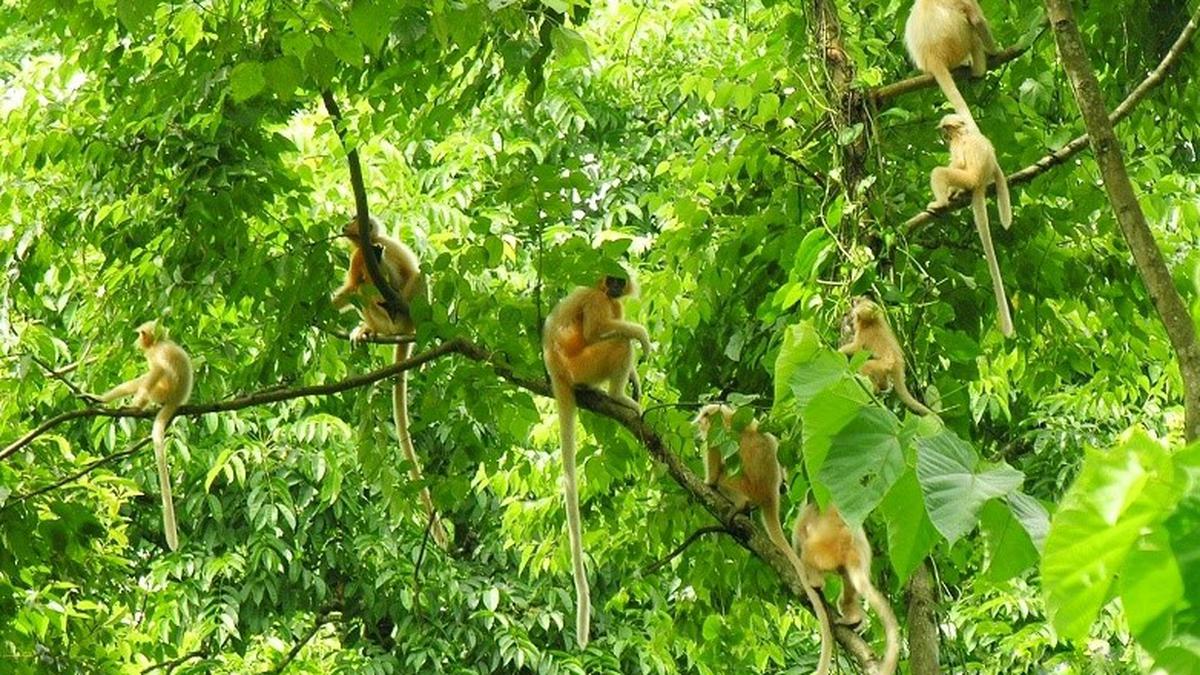
India’s golden langur population estimated at 7,396
The Hindu
There are an estimated 7,396 golden langurs in India, the latest survey of the primate has revealed. The comprehensive population estimation of the endangered primate was carried out in two phases by the Primate Research Centre NE India (PRCNE), Assam Forest Department, Bodoland Territorial Council, Salim Ali Centre for Ornithology and Natural History (SACON), and Conservation Himalayas.
GUWAHATI
There are an estimated 7,396 golden langurs in India, the latest survey of the primate has revealed. The comprehensive population estimation of the endangered primate was carried out in two phases by the Primate Research Centre NE India (PRCNE), Assam Forest Department, Bodoland Territorial Council, Salim Ali Centre for Ornithology and Natural History (SACON), and Conservation Himalayas.
The entire distribution range of the golden langur (Trachypithecus geei) covers the Manas Biosphere Reserve and all fragmented forests in the western part of Assam.
In the first phase during March-April 2020, the survey covered the western part of the Manas Biosphere Reserve, including Ripu Reserved Forest — a major part of it was recently upgraded to Raimona National Park – Chirang Reserve Forest, Manas Reserve Forest, and Manas National Park up to the western bank of the Manas River.
The second phase during the same months in 2021 focussed on fragmented forest habitats of golden langurs in the Bongaigaon, Kokrajhar, and Dhubri districts of western Assam. The block count method was applied for the first time to assess the abundance, spatial distribution, and densities of the golden langur populations.
“This method is considered to be relatively simple, cost-effective, and robust for arboreal and small group-living primates such as the golden langur,” H.N. Kumara, the principal scientist of SACON said.
The golden langur habitat was demarcated into 51 counting blocks, each overlaid with 50-hectare grid cells. Ten teams, each comprising one or two trained enumerators and three to four forest staff, surveyed the blocks.













